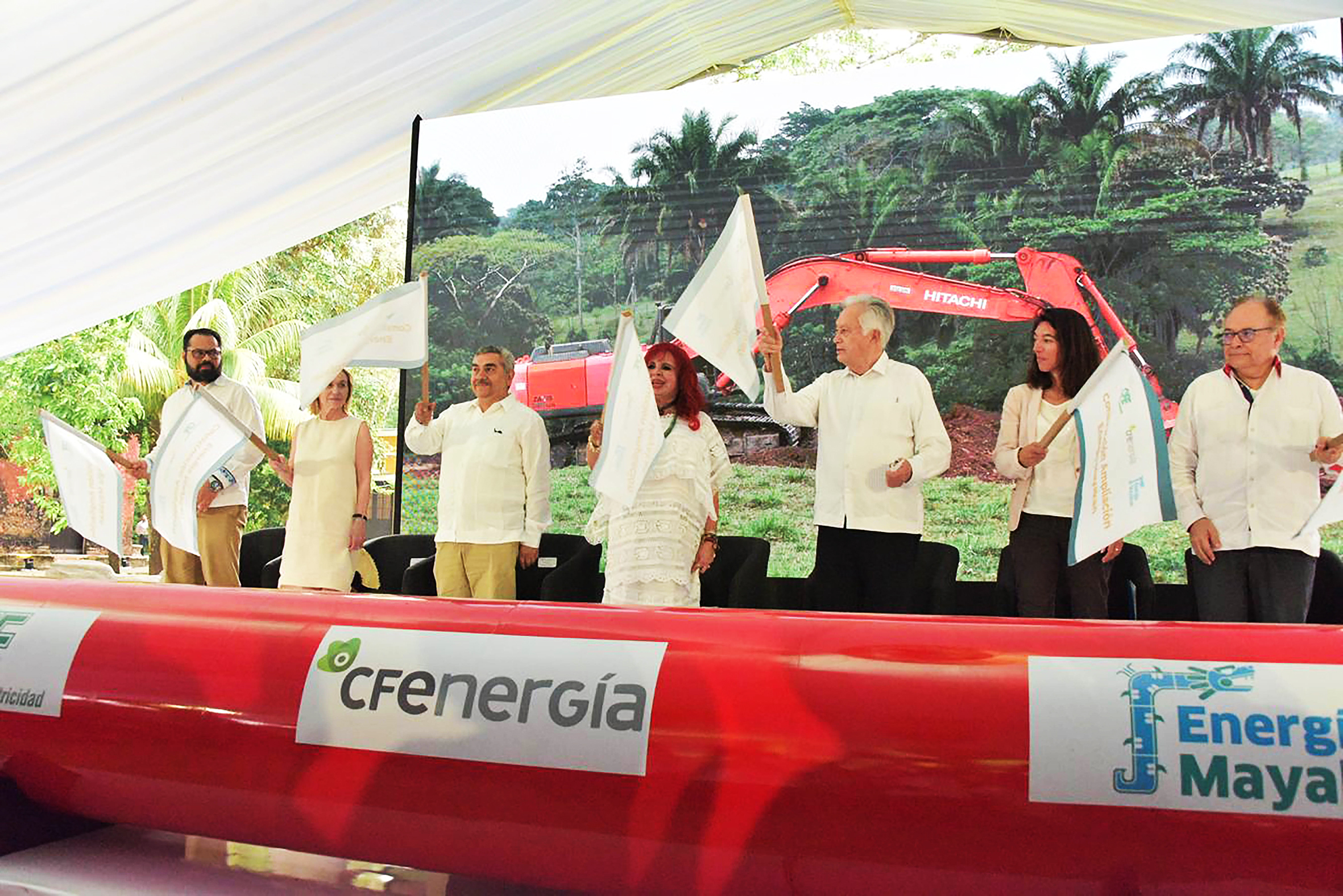September 2024, Vol. 251, No. 9
Features
Ground Work on Extension of Mayakan Pipeline Begins
By Mauro Nogarin, P&GJ Correspondent, South America
(P&GJ) – The Federal Electricity Commission (CFE) and Engie Mexico began construction work after signing a new agreement at the end of March for the expansion of the Mayakan Gas Pipeline.

This project will almost double natural gas transportation capacity from 250 to 567 MMcfd through the construction of a 435-mile (700-km) pipeline.
An Engie official estimated that the project would be completed by the end of 2026.
The project not only seeks to improve energy infrastructure but also to accelerate the energy transition, reducing the carbon footprint by up to 7.4 million tons of CO2 equivalent per year.
This project will also boost the economic and social development of the southern region of Mexico, with the creation of more than 4,000 direct and indirect jobs and an investment of $2 billion, as well as the construction of 275 social infrastructure projects that will benefit the communities in the area.
The main objective of the project Sistema de Transporte de Gas Natural Energía Mayakan Unificado is to increase the natural gas transportation capacity from the Texas pipeline, allowing this to feed the combined cycle-power plants of Merida and Valladolid, located in the peninsula: Merida IV with a capacity of 500 Megawatts and Rivera Maya, in the municipality of Valladolid, with a capacity of 1,020 megawatts.
In general, the pipeline runs from the Pemex natural gas processing center in Nuevo Pemex (Tabasco state) to power plants in Mérida and Valladolid (Yucatan state), passing through the Macuspana station near Ciudad Pemex, Tabasco and the compression station near Champotón (Campeche) on the way.
To increase natural gas transportation capacity, the project contemplates the installation of additional infrastructure (new compression stations, new metering stations and parallel gas pipelines), as well as the necessary adjustments to the existing infrastructure of Energía Mayakan’s Sistrangas (STGN).
Among the new facilities required for the construction of this project is the installation of three metering stations, two in the city of Mérida in Yucatán and one in Valladolid.
As part of the new infrastructure, four new parallel gas pipelines will be built, with the respective sectioning valves and the respective instrumentation for their correct operation.
The loops will also have a cathodic protection system and delivery/receipt traps.
As for the existing compression stations, the project contemplates the modification of the CS located in the town of Macuspana, near Ciudad Pemex, the repowering of the Compression Station near Champotón de Campeche, the expansion of the measurement stations in Cactus and the reinforcement of 10.5 mi (17 km) of the existing pipelines.
All facilities, including the pipelines and compressor stations, have been designed for an estimated use life of 30 years.
The new parallel pipeline between the Macuspana and Champotón stations will have a diameter of 20 inches and a length of 163 miles (263 km), and the parallel pipeline between the Champotón station and the double trap located in the city of Mérida, at the end of the existing pipeline, will have a diameter of 24 inches and a length of 168 mi (270 km).
The third parallel pipeline starts from the double devil’s trap in Merida that will connect to Merida II and Merida III stations. It will have a diameter of 16 inches and a length of 2.1 mi (3.5 km). Finally, the fourth gas pipeline that will connect from the double devil’s trap in Merida and the Valladolid III and IV metering stations will have a diameter of 24 inches and a length of 100 mi (160 km).
As for the existing 24-, 22- and 16-inch gas pipelines, they will be reinforced in accordance with the standards for force in the country, with their 10.5 mi (17 km) divided as follows: 4.7 mi (7.5 km) for the section between the Macuspana and Champotón compression stations, 5 mi (8 km) from Champotón to the Mérida double devils trap and in the section from the Mérida double devils trap to Valladolid a length of 1 mile (1.6 km).
The assembly work of the new gas pipelines will be carried out within the 9.3-mi (15-m) right-of-way strip, and, in certain cases, a temporary safety strip of another 15 m will be additionally required.
The point of interconnection to the new Mayakan pipeline is located about 1.2 mi (2 km) from the CPG Cactus power plant which is currently fed by the 48-inch pipeline (Cactus-San Fernando).
Gas from the Cactus-San Fernando pipeline arriving at interconnection Point 2 has a 48-in to 36-in drawdown, with a minimum operating pressure range of 800 psig and a maximum pressure of 1,000 psig, with a design pressure of 1,200 psig.
From this point, the natural gas flows through the buried interconnecting pipeline to the Cactus Metering Station, with a maximum design capacity of 567 MMscfd.
The SCADA system, located in the control room at the Macuspana Compression Station, will monitor and control the operation of the new pipeline.
According to CFE, the Mérida and Valladolid power stations will begin receiving gas from the expanded pipeline by May 2025, followed by all other power plants in the region by December 2026.





Comments